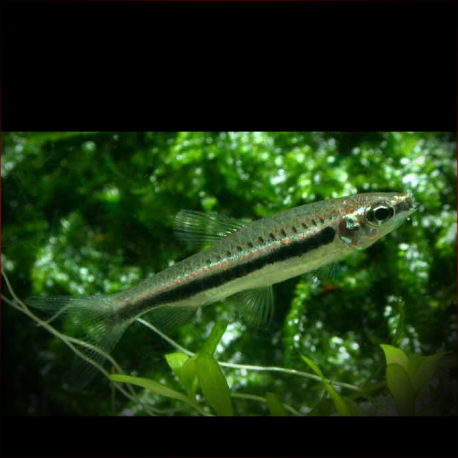More info
Datasheet
| Minimum Tank Size | 60 litres / 15.85 US gallons |
| Maximum Size | 3.5cm / 1.38inches |
| Temperature | 23°C / 73.40°F - 28°C / 82.40°F |
| Hardness | 1.01dgH / 18ppm - 8.01dgH / 143ppm |
| pH | 4.0-7.0 |
Behaviour
The Shining Pencilfish is relatively peaceful and does not fare well with very boisterous or significantly larger tankmates. Ideally, it should be kept in a community tank with similarly-sized, serene characids, along with smaller catfish species. It can also act as an excellent dither fish for dwarf cichlids and may coexist with smaller rasboras, barbs, and anabantoids. It is recommended to keep a group of 10 or more individuals to spread out any potential aggression, enhance boldness, and observe more natural behaviors.
Aquarium Setup
For optimal maintenance, the Shining Pencilfish thrives in a heavily planted aquarium with a dark substrate. Use of floating plants, driftwood branches, and dried leaf litter promotes natural behaviors and reduces skittishness. The setup provides broken lines of sight, creating a conducive environment for the fish. Gentle filtration, such as an air-powered sponge filter, is usually sufficient, with some water movement deemed acceptable.
Feeding and Diet
As a micropredator, the Shining Pencilfish consumes tiny invertebrates and zooplankton in the wild. In captivity, it readily accepts appropriately sized dried foods but should also be offered daily servings of small live and frozen fare like Artemia nauplii, Moina, and grindal worm to maintain optimal health.
Reproduction & Dimorphism
The Shining Pencilfish is an egg-scattering free spawner that exhibits no parental care. To maximize fry yield, a separate breeding aquarium with dim lighting and suitable spawning substrate is recommended. Distinctively, adult males are typically slimmer and bear a more intensely patterned coloration compared to females.
Habitat and Distribution
Nannostomus Nitidus is native to eastern Brazil, specifically described from the Igarapé Candiru-Mirim, Rio Capim, Pará. It prefers sluggish tributaries, small rivers, and swampy regions with dense aquatic vegetation or submerged structures. Similar-looking fish have been sighted in other Brazilian regions, such as Santarém and Fortaleza, although these sightings may necessitate verification.

